Anchors, no. 2 & no. 3, 2024
glass, silk, salt, sailing cord, bronze
exhibition views, Voyant, Andrehn-Schiptjenko Paris



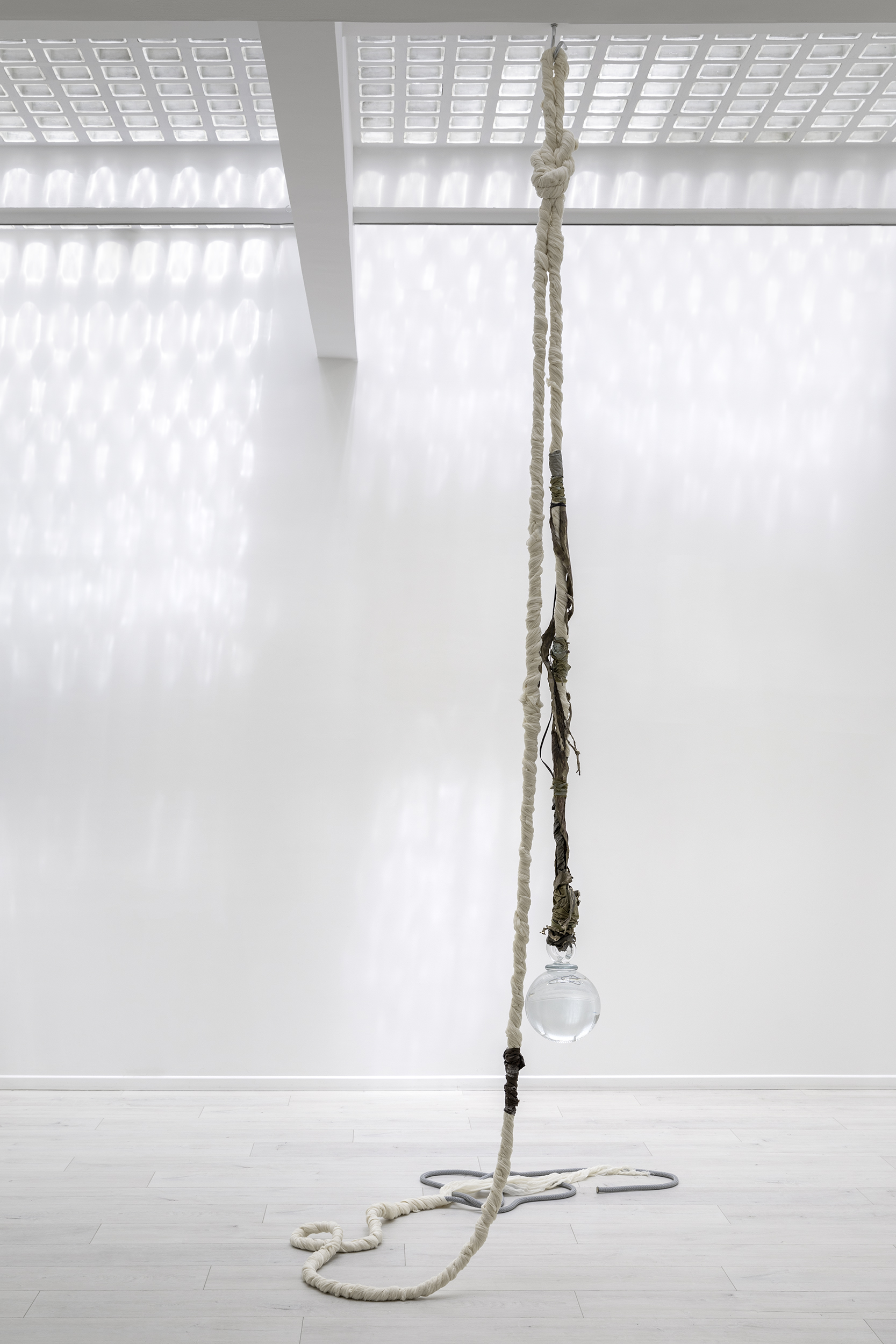



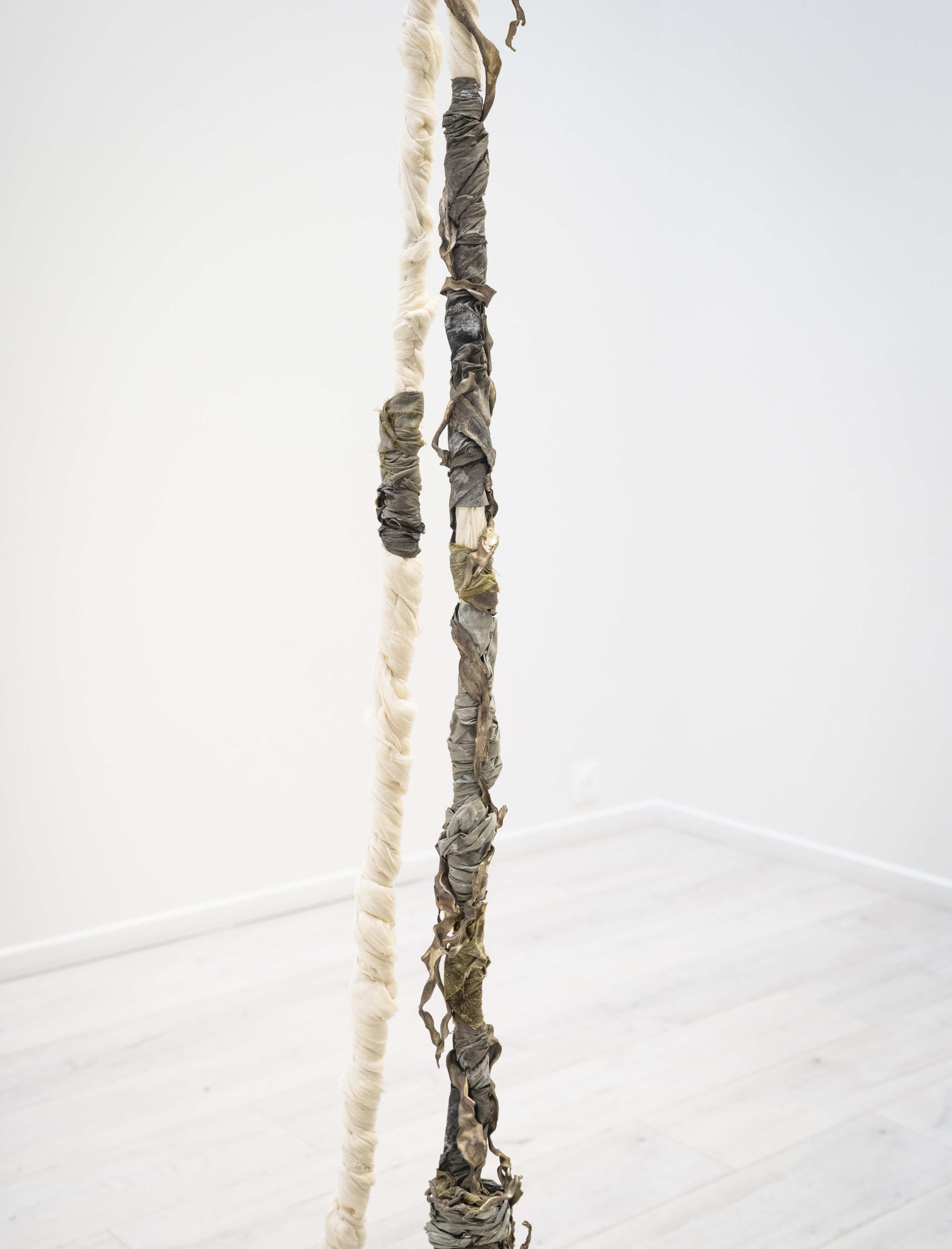
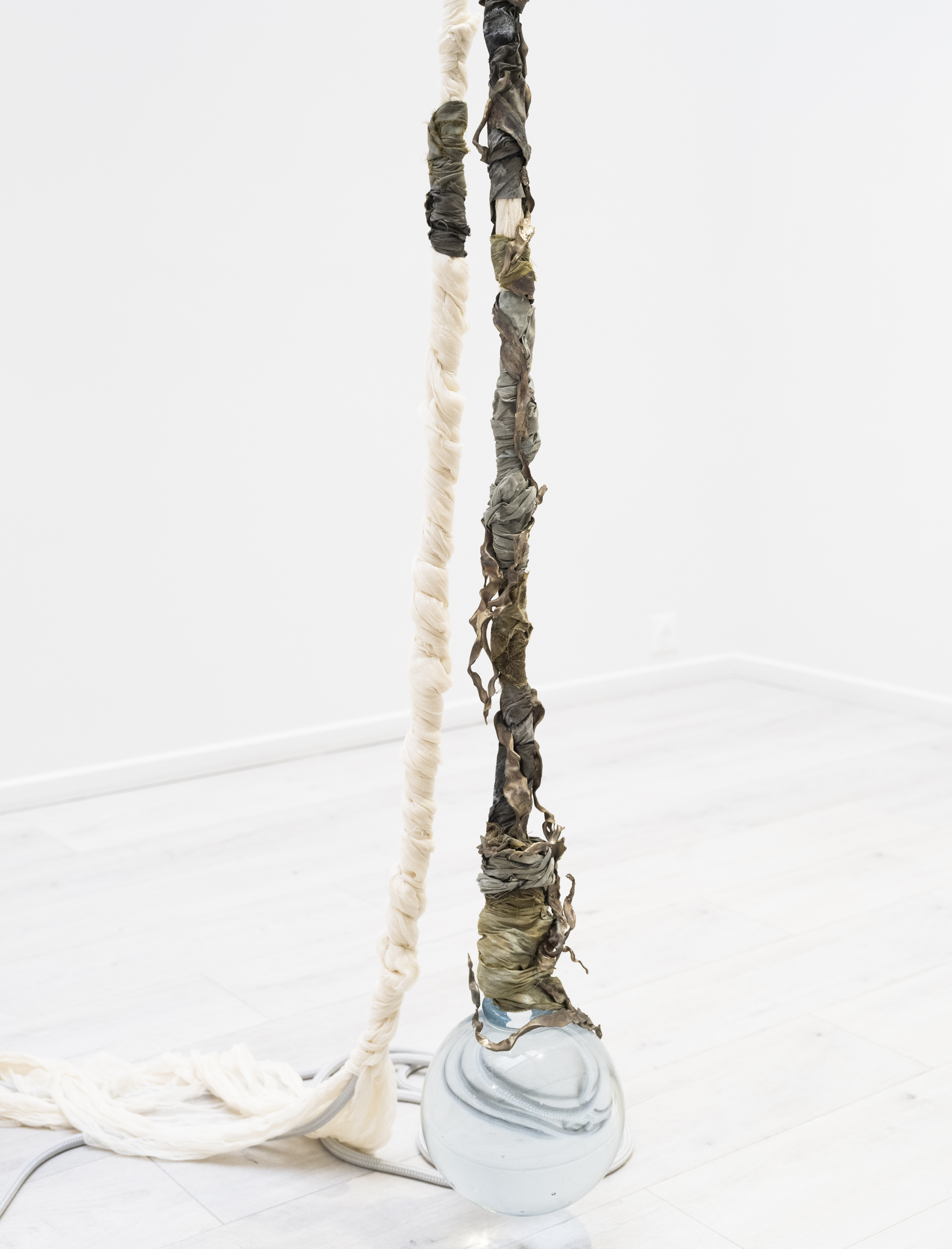
Crystalline Thresholds | Les Portes de Givre, 2022-2023
Located at the top of the Puy de Dôme volcano in France, this winter project inaugurated on the 3rd of December 2022 takes the form of an installation of monumental ephemeral sculptures in the form of passageways positioned for the Pleiades constellation. Each piece is sculpted by the Atlantic winds and atmospheric conditions that give way to specific frost phenomena, eventually disappearing with the arrival of spring. The work is made in collaboration with the meteorological station and oldest observatory in France found at the top of this exceptional Unesco world heritage location chosen for its unique and pure atmosphere, its recurring frost and ice storms, and on the basis of Mirlesse’s grandfather’s research in the 1930s for the Ministry of Air. The site of a unique microclimate in Europe, the summit was long a Gallo-roman destination for pilgrimage and home to the Temple of Mercury, of which a doorway still stands among the ruins. The idea of thresholds, atmospheric, mythological, architectural and geological are at the core of the proposal.

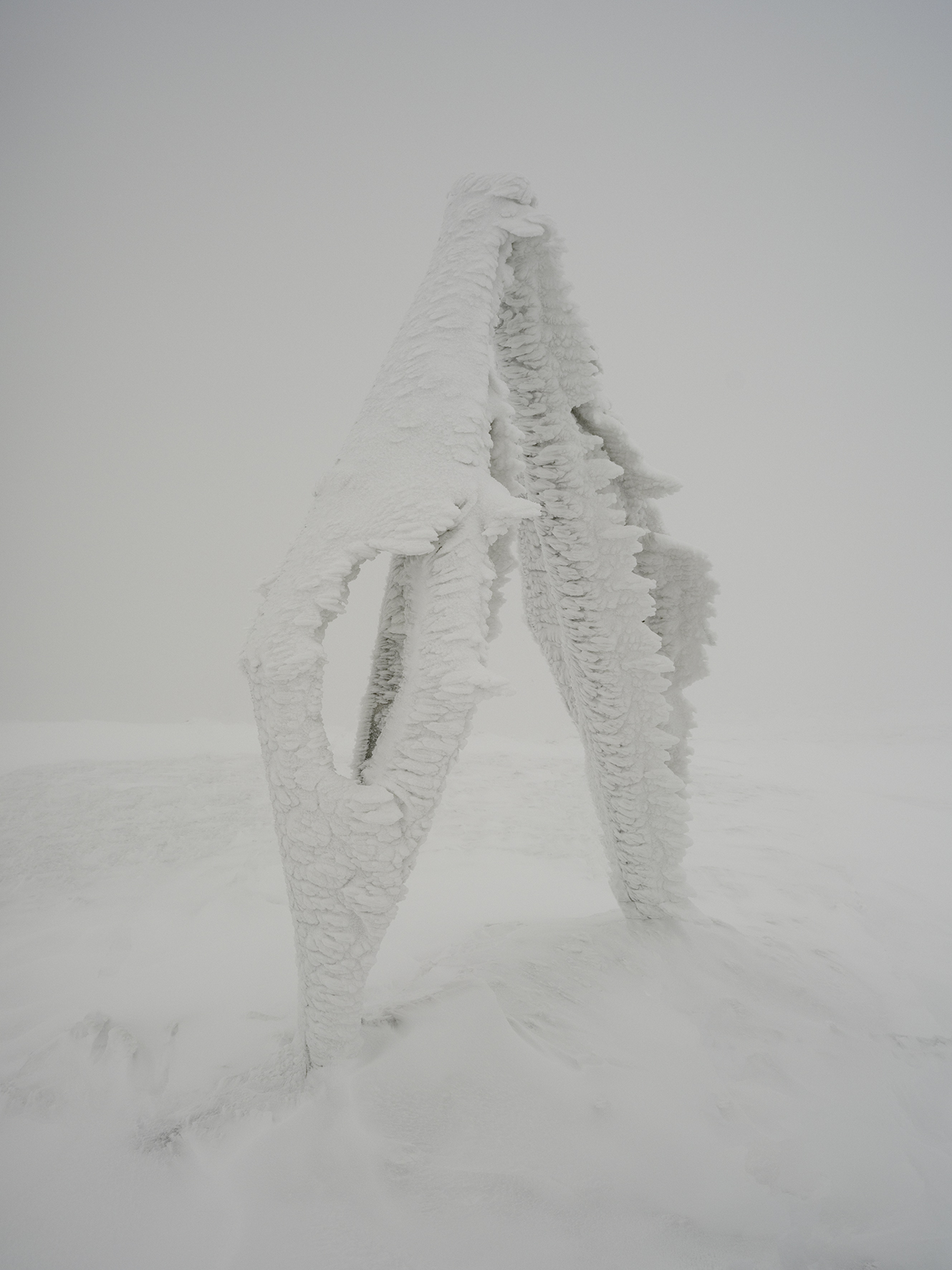








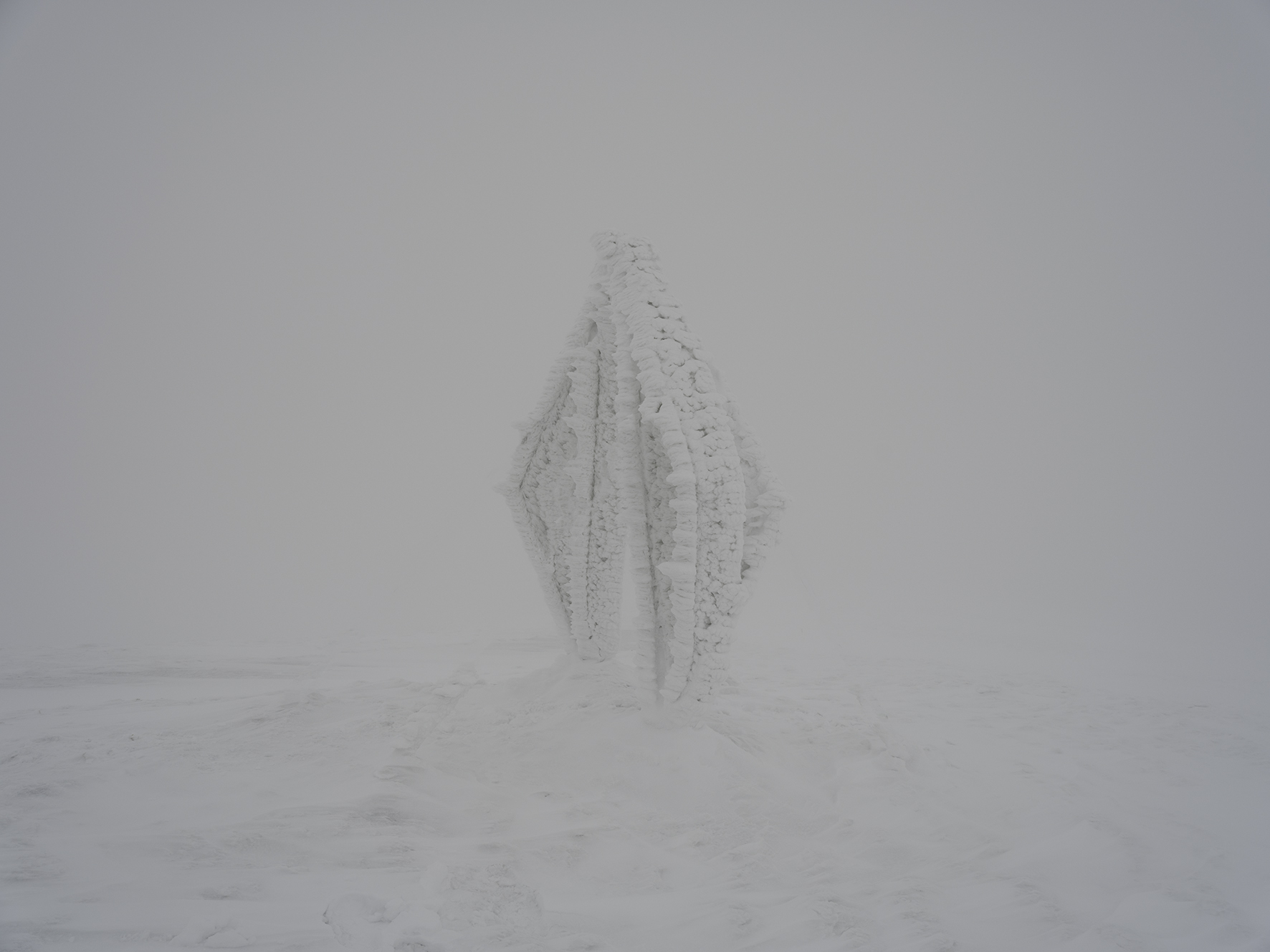

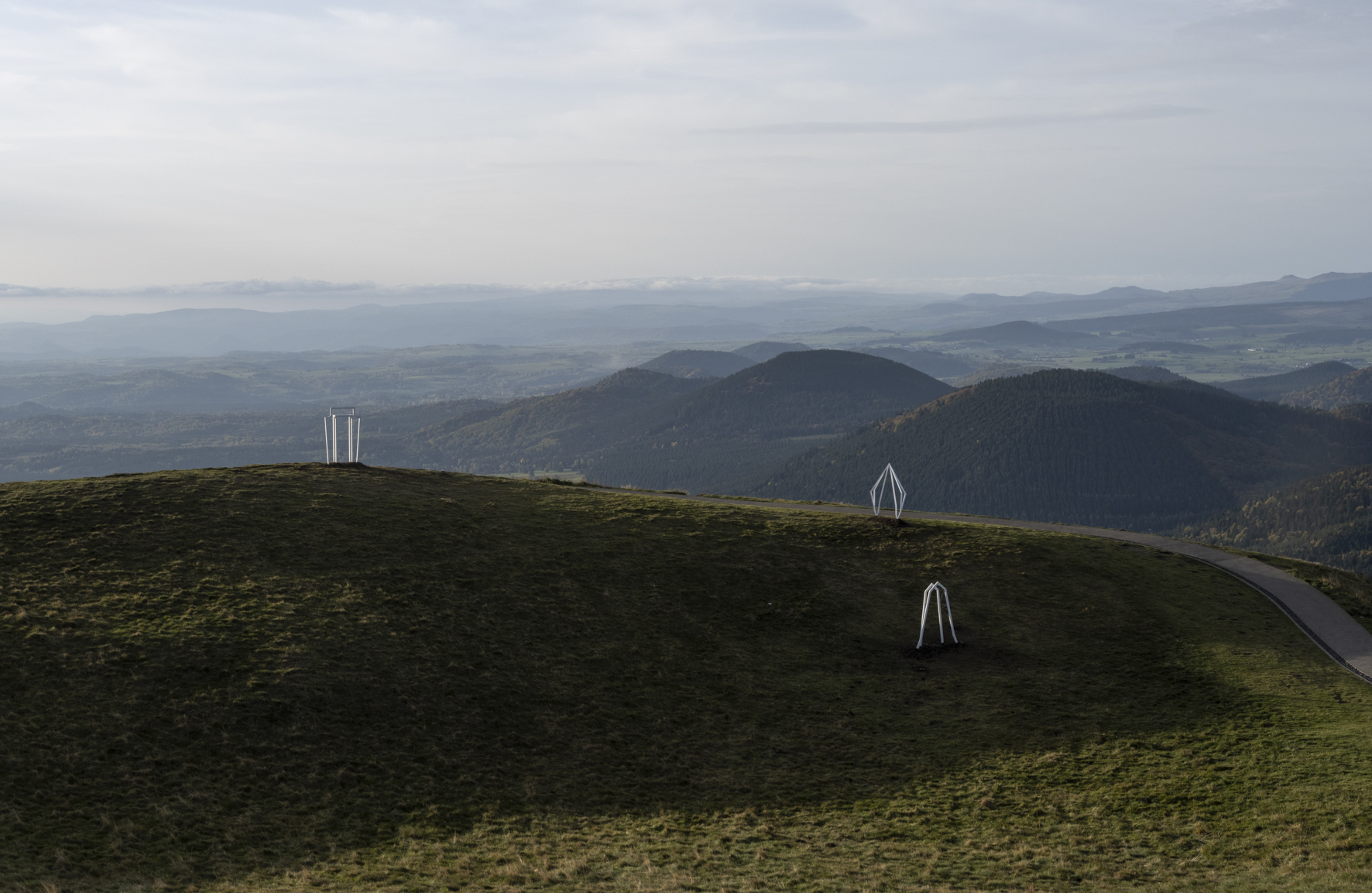
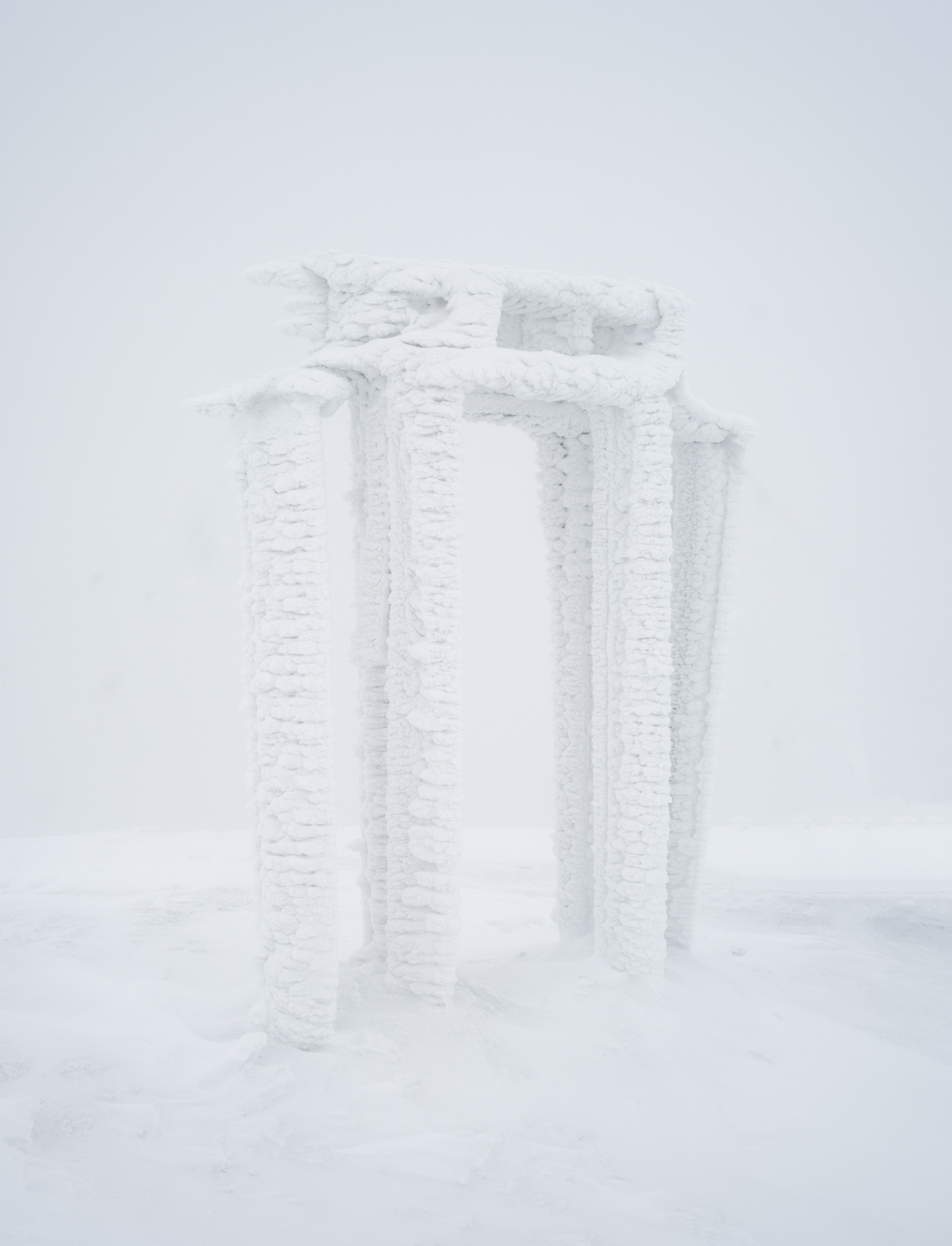

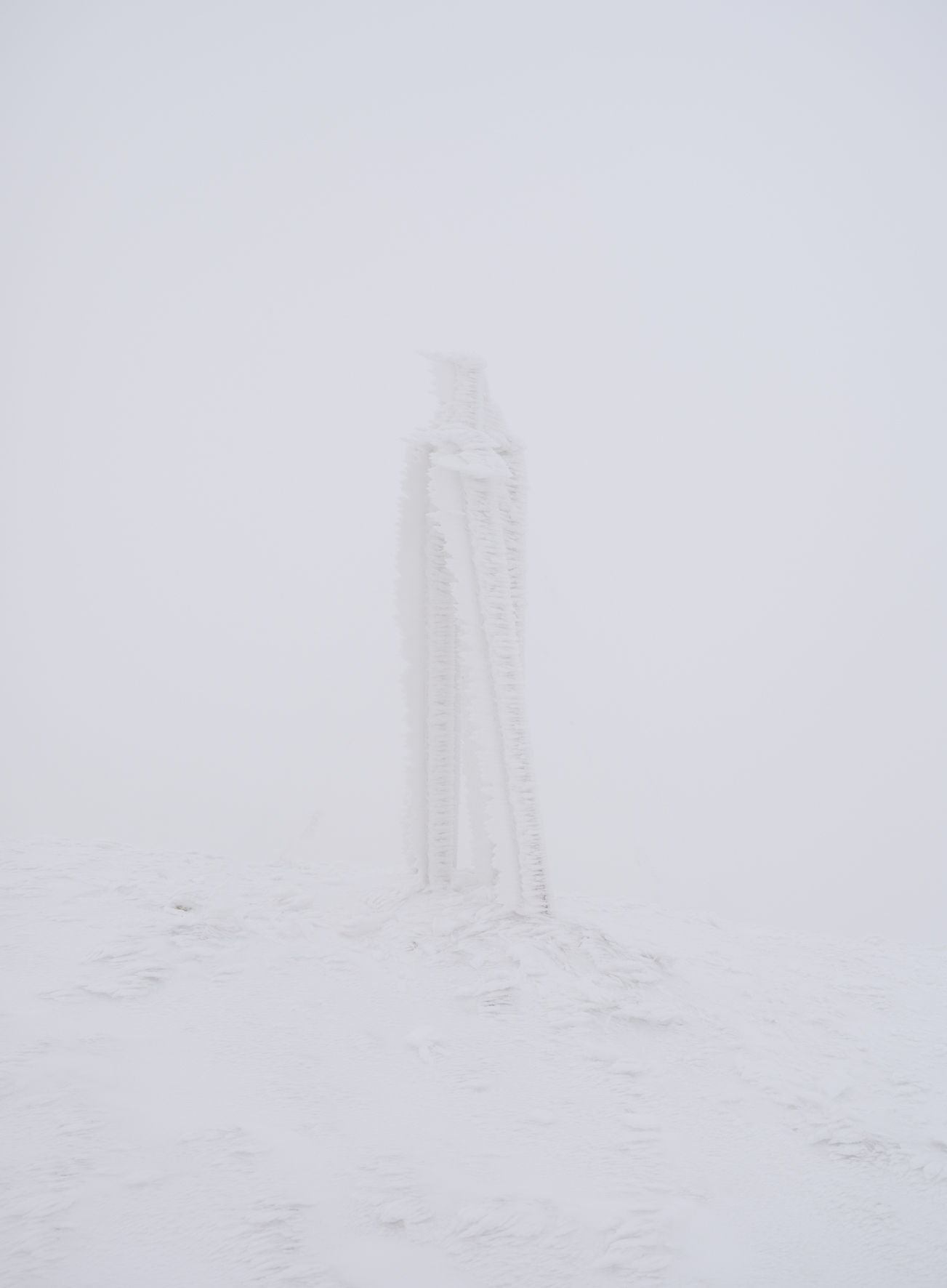



Inspired by a 250-year-old history of measuring sea-levels, Ode to Measurement, 2025, comprises two cast-bronze sculptures placed in the waters just near the mareograph’s activity at Skeppsholmen. Rising gracefully from the sea, at four meters tall, an elongated diamond enclosure atop a long pole demarcated with horizontal notches recalls mysterious tools found in the tombs of Norse women described as “seers”, whose precise function is unknown. Adjacent, and floating on the water, a flat arc comprising divaricating lines refers to pre-compass instruments used by 11th century navigators to measure latitude and wind from their ships. For more than two months, Ode to Measurement will punctuate Stockholm’s natural landscape and honor the site where sea level has been steadily recorded longer than anywhere else on earth. In return, nature will likewise leave her mark on Mirlesse’s sculpture. As the water levels rise this summer, the vane will become increasingly submerged, while water, air and salt slowly weather the bronze patina over time.


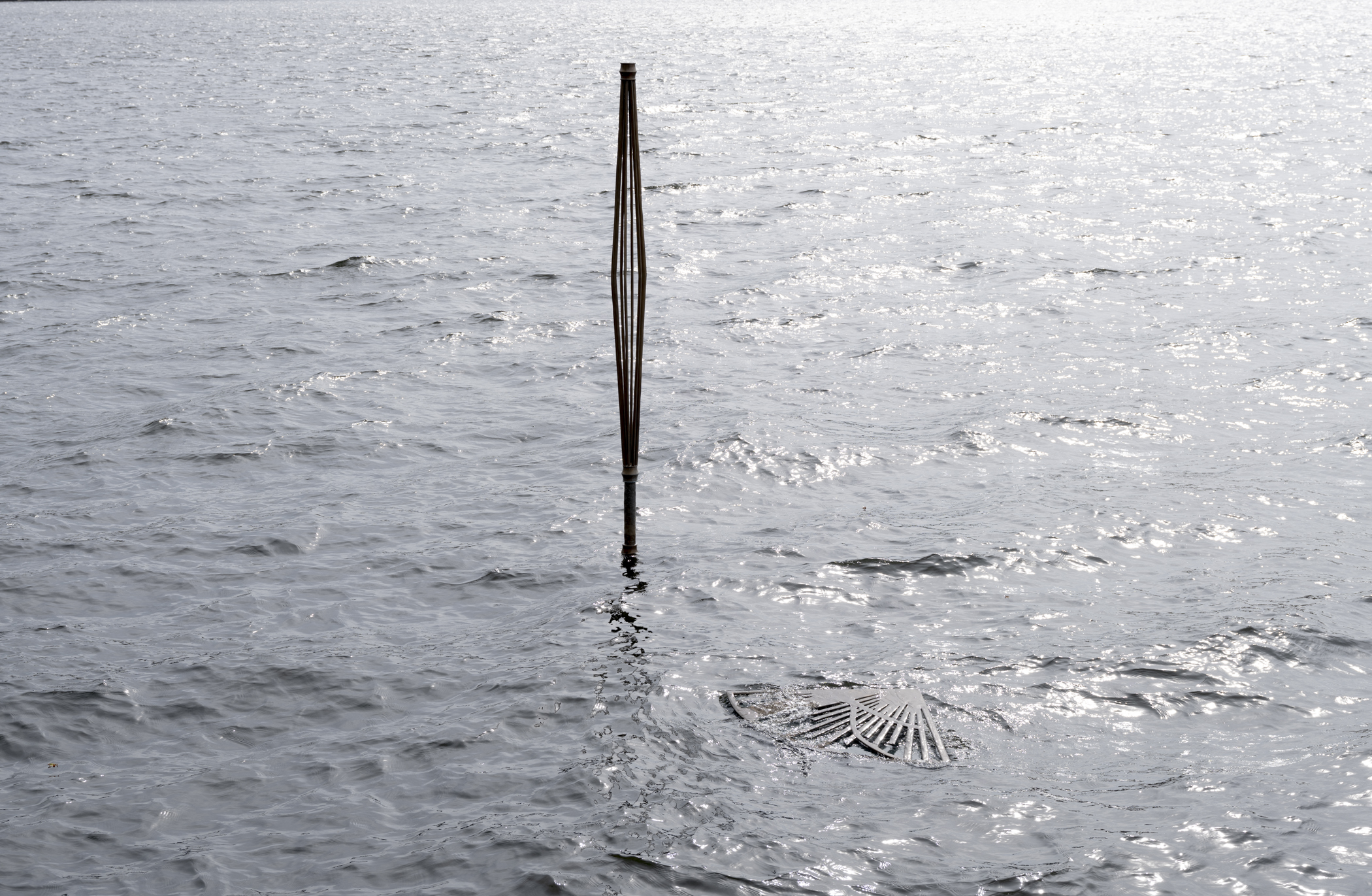
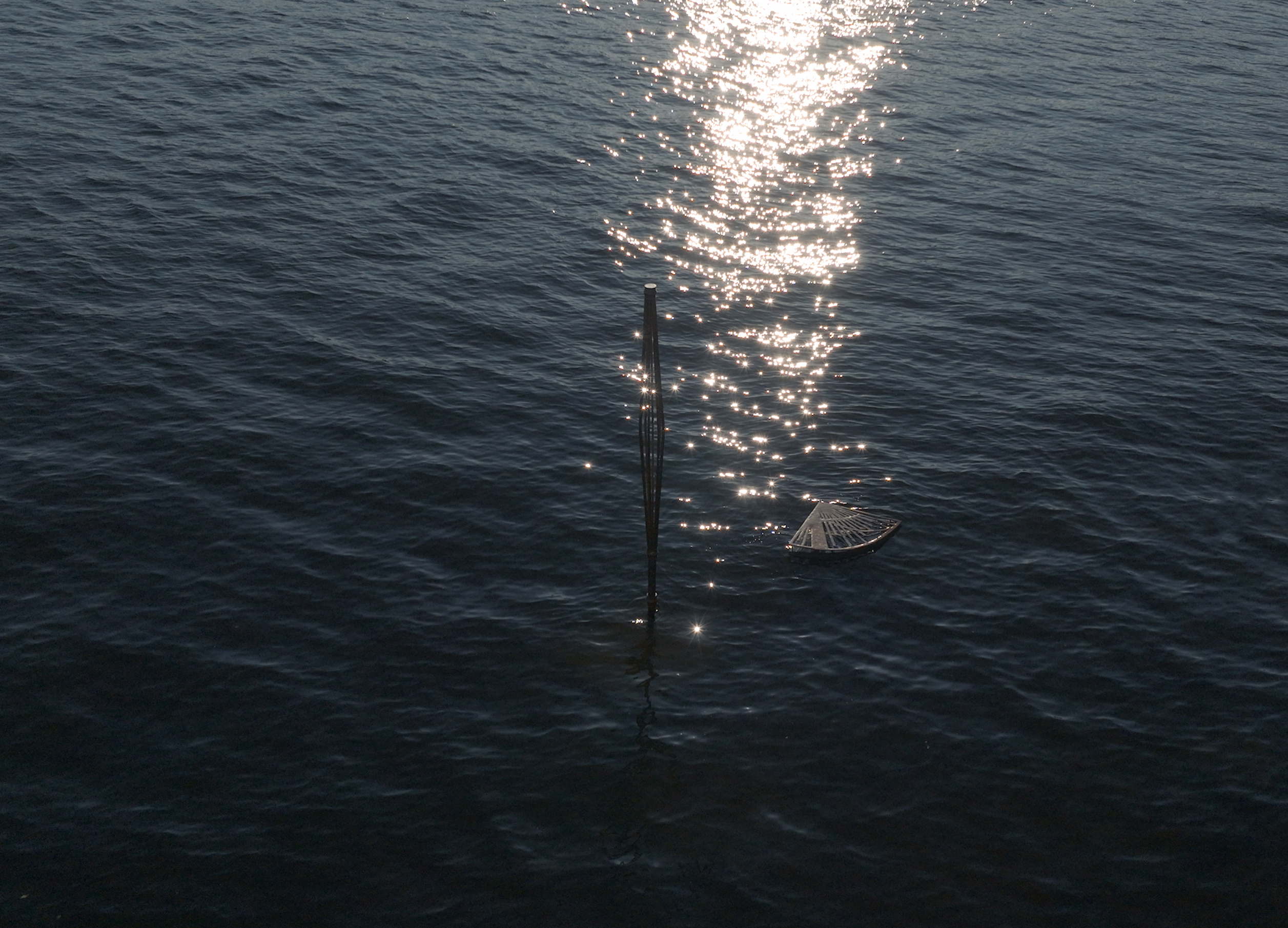





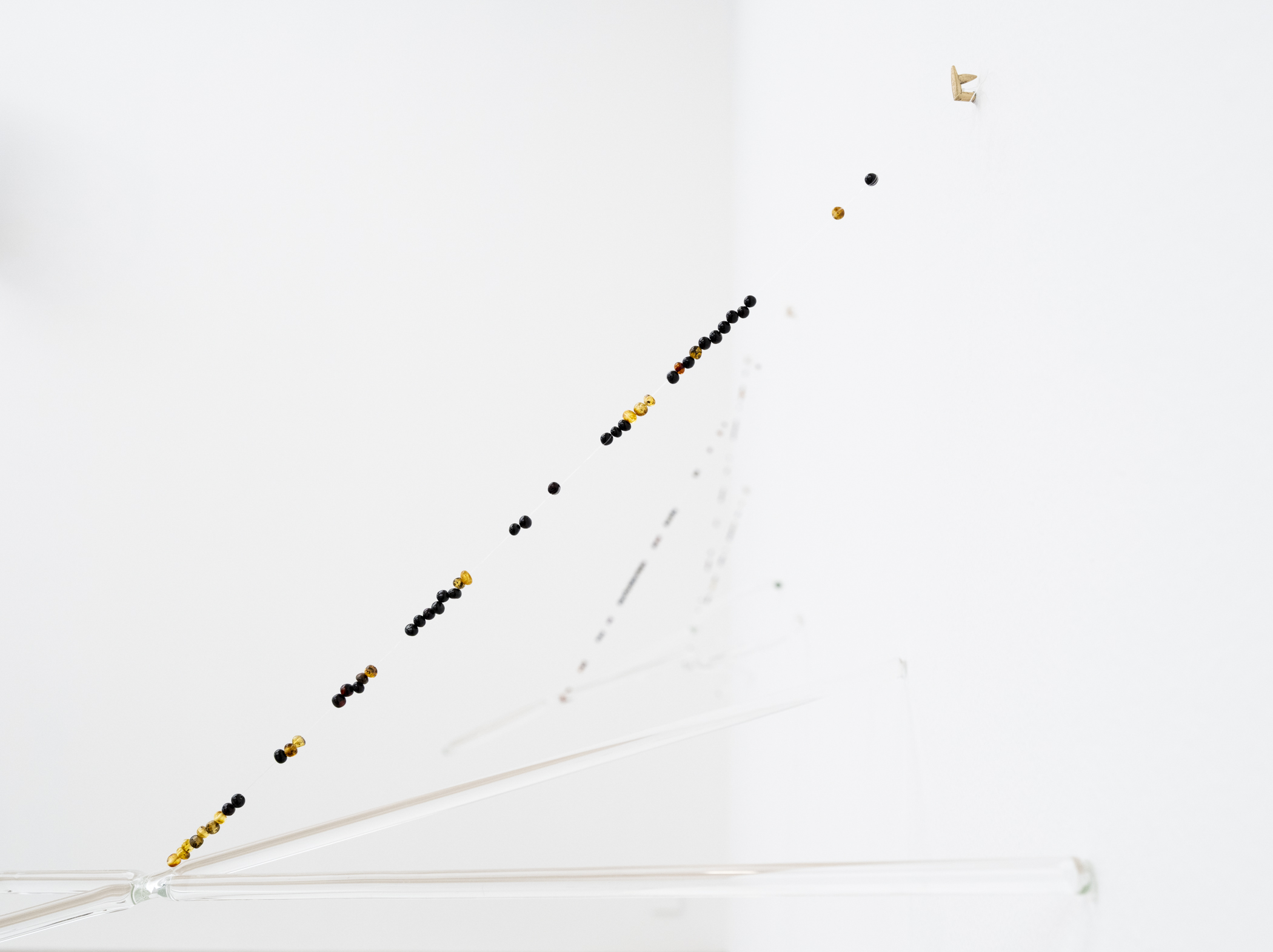
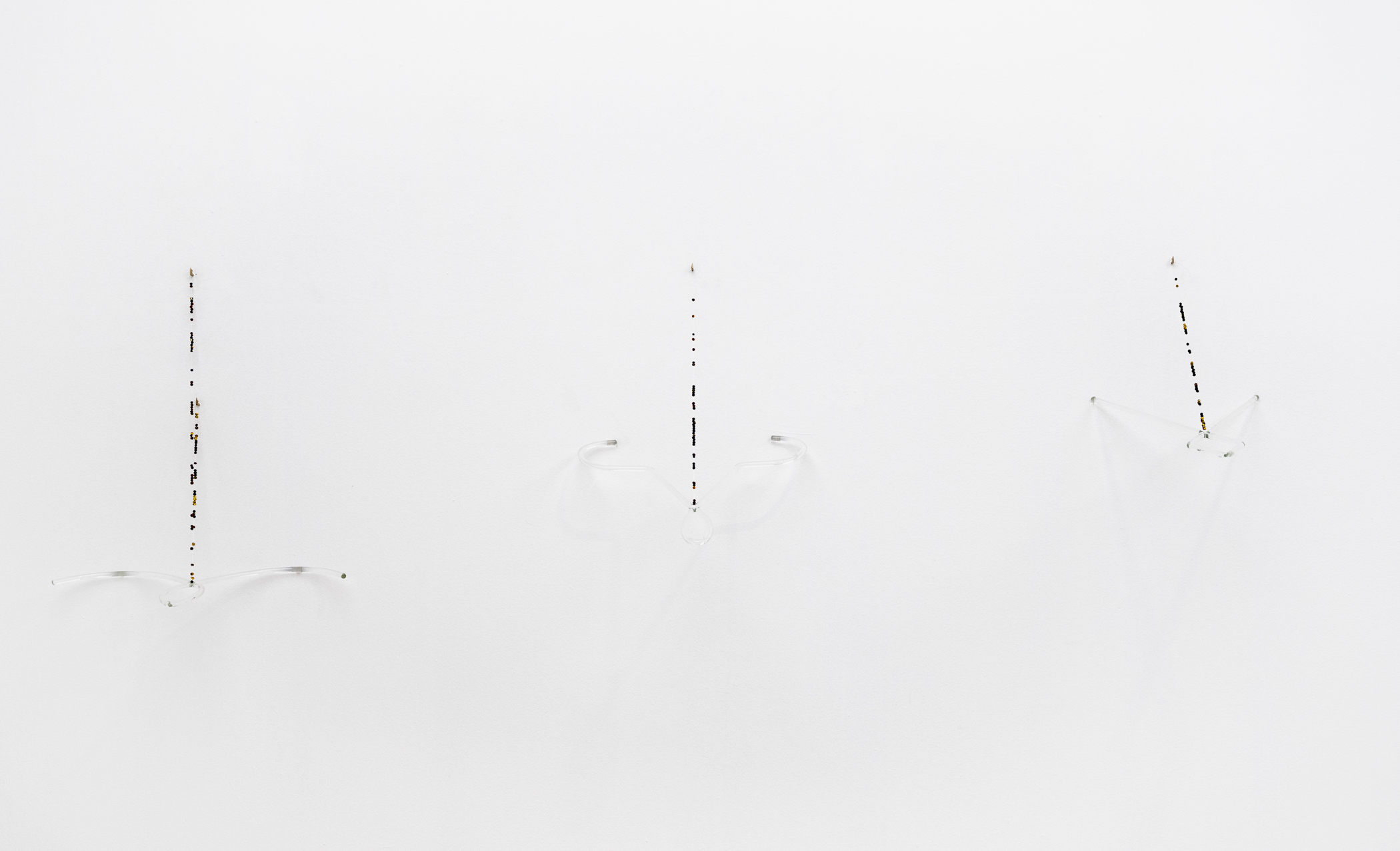




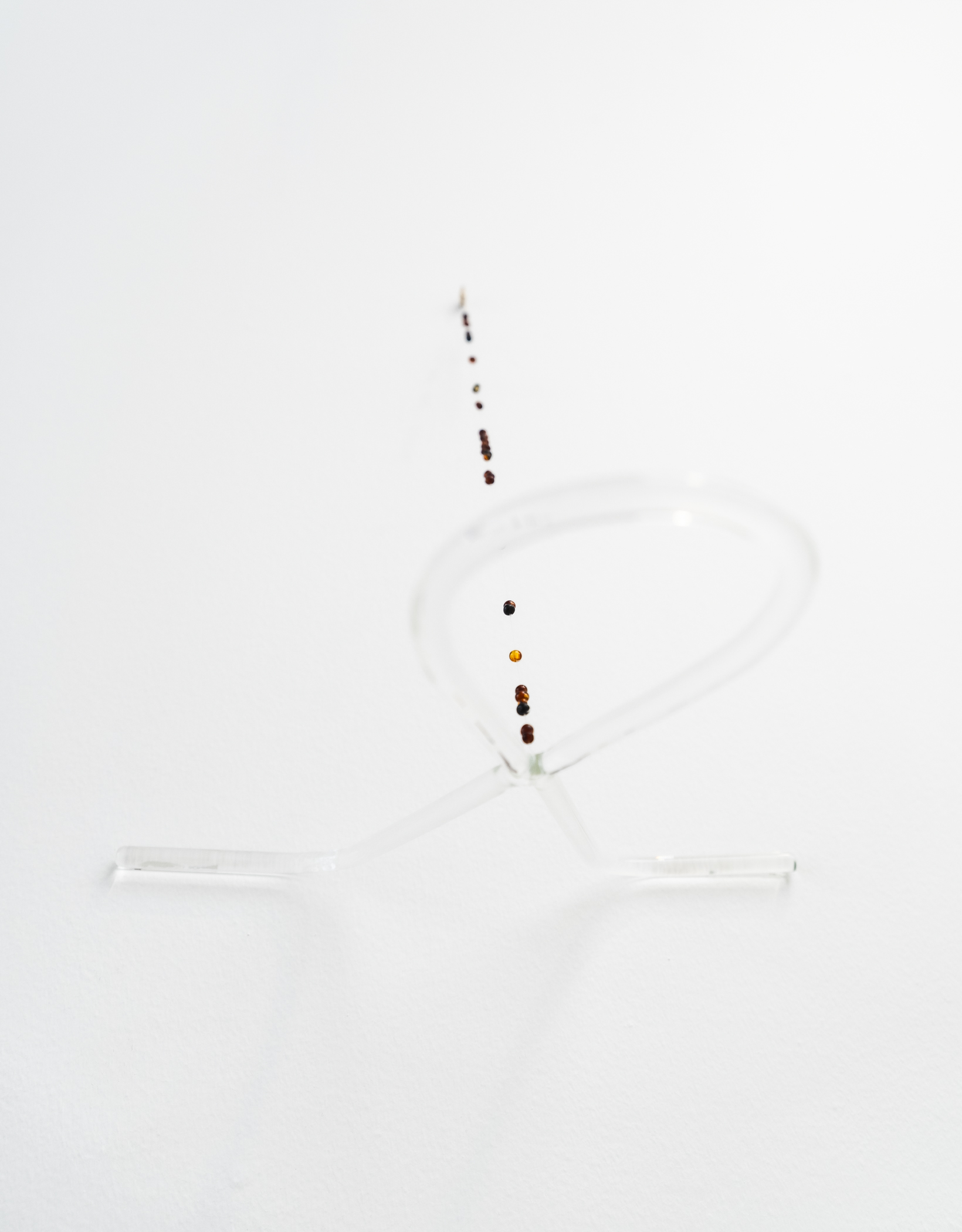

Elektrods no. 1-8,
2025
baltic amber, borosilicate glass, brass, fishing line various dimensions
2025
baltic amber, borosilicate glass, brass, fishing line various dimensions
Inspired by research from the New York Public Library’s picture collection of images of homemade dowsing rods, the Elektrods are made from solid borosilicate glass, and are suspended from fishing line dotted with beads of baltic amber in active or rested position in tension with the wall. They are each hung from very small sculptured brass hooks.
Installation views from ‘Instruments’ solo exhibition at Andréhn-Schiptjenko Gallery in Stockholm
Installation views from ‘Instruments’ solo exhibition at Andréhn-Schiptjenko Gallery in Stockholm







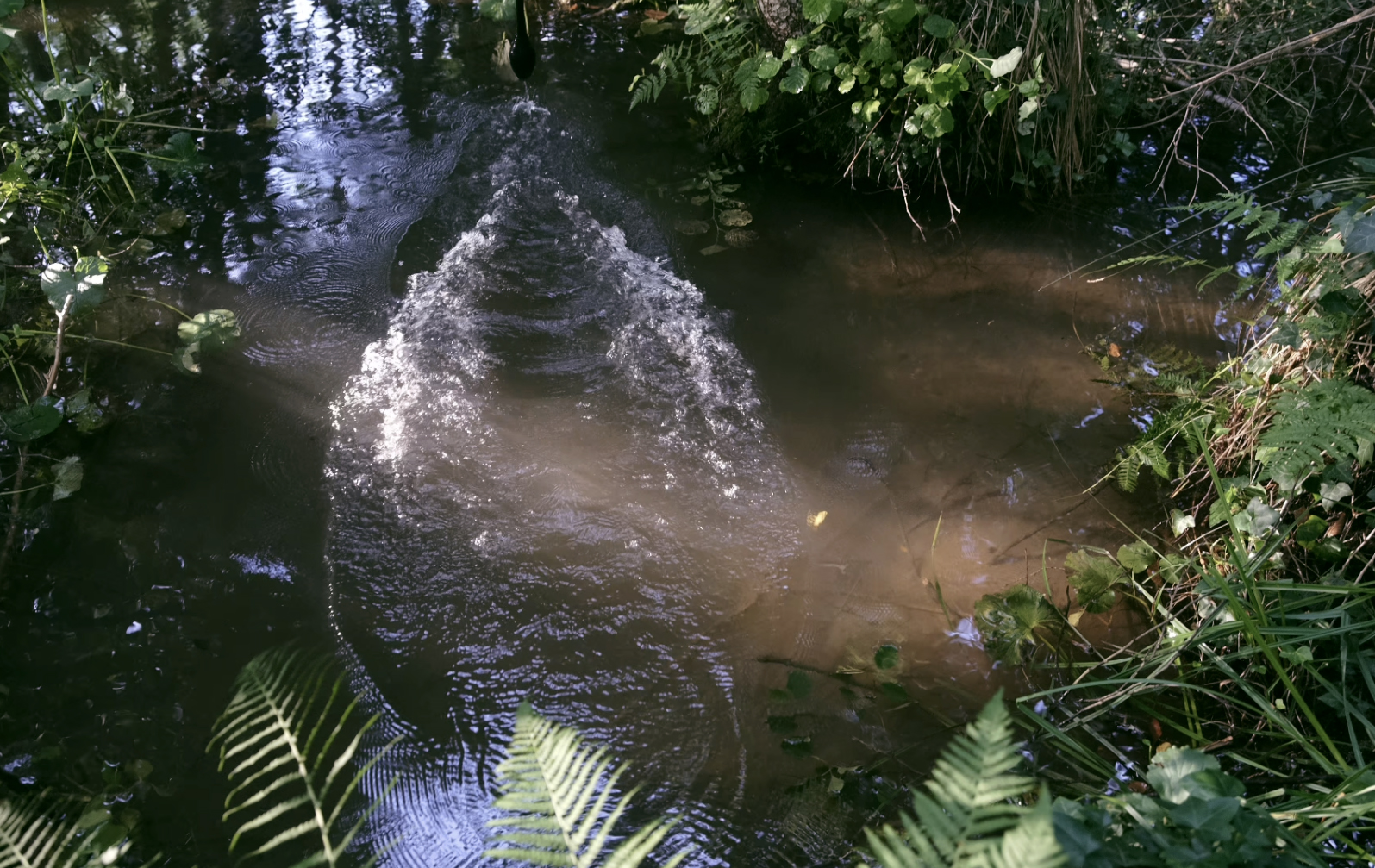




Ofrenda, 2023
Located in the Lotoise village of Les Arques, this work is suspended above a natural spring in the Espace Natural Sensible marshlands. The bell is made from bronze, mixed with the copper and tin offerings of the town inhabitants, inspired by the story of a bell that disappeared fron the village church and was hidden, sunken in the sacred spring in the marsh. Its inscription was inspired by the first lines of a poem by Friedrich Von Schiller, entitled The Song of the Bell. The poem is written in German from the point of view of the poet as he describes his amazement at the making of a bell, this thing that sounds from the fires of the earth. But before he begins his description he lets the bell speak for itself-- in latin, with the first three lines cited here. Mirlesse added two phrases more, to reference the specificity of this story. She then asked the inhabitants of the town and a group of local occitanien dialect specialists to discuss a translation, inscribed here into the bronze at the moment of the pour. The clapper, made from iron and steel, measures more than three meters in length and alternates between gently grazing or stirring the waters surface below, as a nod to the traditional hydromantic practices of the region, in which individuals could read the movements of the waters surface in response to the touch of their hand. In following the Quercy traditions of naming and baptizing a bell, it is called Aïga for the goddess of the stream just meters away.
Cridi los vius
Plori los mòrts
Bresi los lhauçes
Bolegui las prigondors
Agachi enlà de las aigas.
Plori los mòrts
Bresi los lhauçes
Bolegui las prigondors
Agachi enlà de las aigas.
I call the living
I mourn the dead
I break the lightning
I stir the depths
I see through the waters
I mourn the dead
I break the lightning
I stir the depths
I see through the waters
J'appelle les vivants
Je pleure les morts
Je brise les éclairs
Je reveille les profondeurs
Je vois à travers les eaux
Je pleure les morts
Je brise les éclairs
Je reveille les profondeurs
Je vois à travers les eaux
Please follow this link to view the short film
